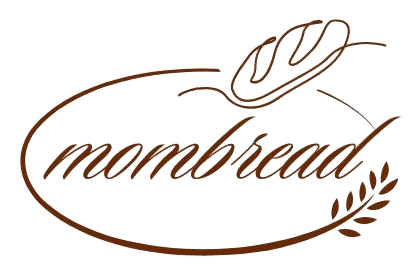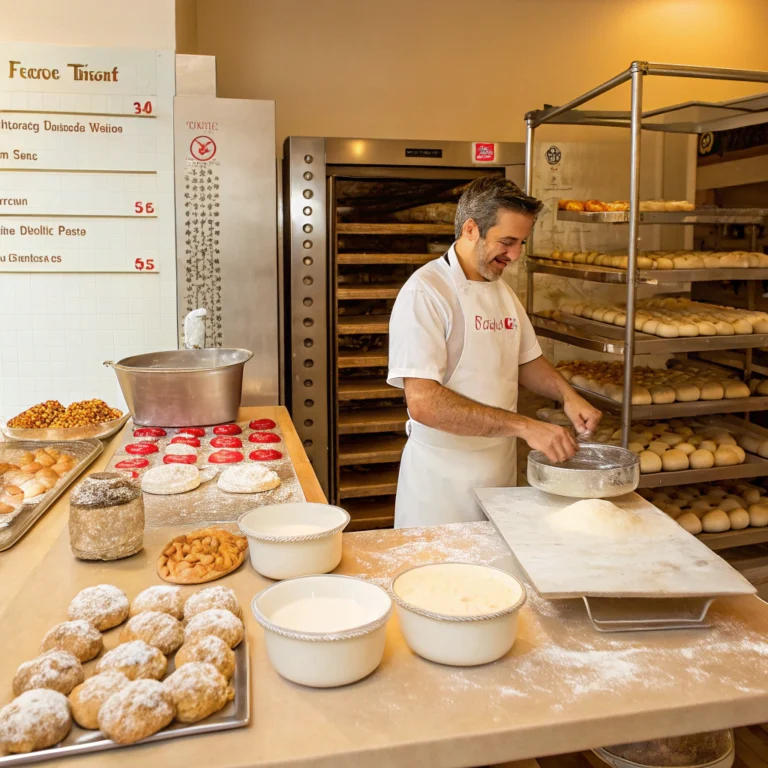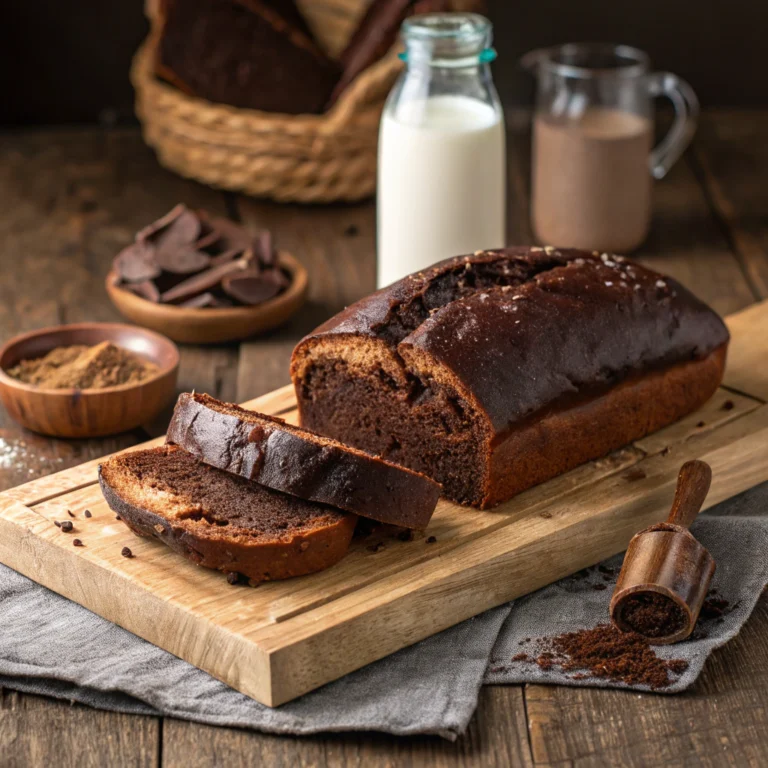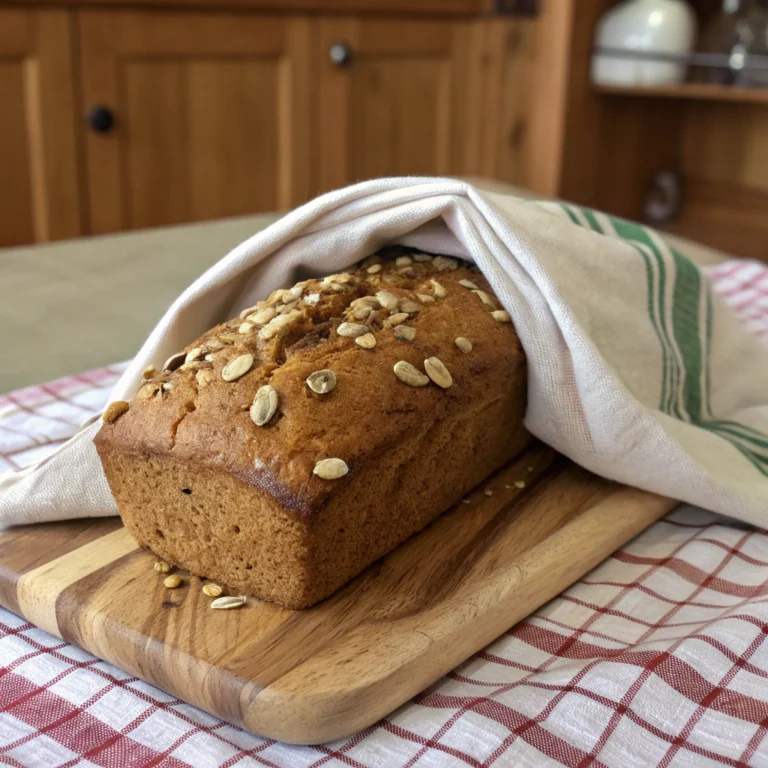Pumpernickel Bread Machine Recipe: 5 Easy Steps to Perfection
Are you craving the rich, dense flavor of homemade pumpernickel? With a bread machine, you can easily satisfy your craving without the hassle of traditional bread making.
Thank you for reading this post, don't forget to subscribe!
pumpernickel bread machine recipe
Using a bread machine simplifies the process, allowing you to enjoy freshly baked pumpernickel with minimal effort. Our simple 5-step recipe makes it easy to achieve that perfect loaf.
Table of Contents
The Rich History and Appeal of Pumpernickel Bread
For those who crave homemade pumpernickel bread, understanding its origins can enhance the baking experience. Pumpernickel bread has a rich history that dates back to the 15th century in Germany, where it was first baked in stone ovens. This bread type has gained popularity worldwide due to its distinctive flavor and dense texture.

f you own a Zojirushi bread machine — or you’re thinking of getting one — this cookbook will completely transform the way you bake at home. The Zojirushi Bread Machine Cookbook is more than just a collection of recipes; it’s a no-fuss guide with step-by-step instructions that walk you through making perfect loaves every time, no matter your skill level.
What makes it even better? It includes keto and gluten-free options, making it ideal for anyone looking to bake healthier bread without compromising on taste or texture.
✅ Whether you’re a beginner or a seasoned baker, this cookbook takes the guesswork out of bread making.
📚 Grab your copy here on Amazon:
Zojirushi Bread Machine Cookbook (Paperback)
Make every loaf a success — and enjoy homemade bread with confidence https://amzn.to/4kxlktd.
homemade pumpernickel bread
What Makes Pumpernickel Unique
Pumpernickel bread is known for its dark color, dense texture, and slightly sweet flavor. The uniqueness of pumpernickel lies in its ingredients and baking process. Traditionally, it’s made with coarse, dark rye flour, sometimes with caraway seeds, and baked for a long time at a low temperature. This slow baking process gives pumpernickel its characteristic taste and texture.
Traditional vs. Modern Pumpernickel
While traditional pumpernickel is still baked using age-old methods, modern variations have adapted to contemporary tastes and baking techniques. Modern pumpernickel recipes might use a bread machine, simplifying the process and making it easier for home bakers to achieve authentic results. Despite these changes, the essence of pumpernickel remains the same: a hearty, flavorful bread that’s perfect for sandwiches or toast.
Whether you’re making traditional or modern pumpernickel, the joy of baking lies in experimenting with different ingredients and techniques to create your perfect loaf. With an easy pumpernickel recipe, you can enjoy this delicious bread at home.
Essential Ingredients for Your Pumpernickel Bread Machine Recipe
The foundation of a great pumpernickel bread lies in its ingredients, which we’ll explore in detail. To successfully bake pumpernickel bread, understanding the role of each ingredient is crucial. This knowledge will help you make informed decisions when preparing your dough.
Core Ingredients List
To make pumpernickel bread in a bread machine, you’ll need the following core ingredients:
- Flour: Rye flour is essential for pumpernickel bread. You can use a combination of rye and whole wheat flour for a more complex flavor.
- Yeast: Active dry yeast or instant yeast works well in bread machines.
- Salt: Salt enhances the flavor and helps control yeast growth.
- Sugar: A small amount of sugar feeds the yeast, promoting fermentation.
- Liquid: Water or a combination of water and molasses is used to hydrate the dough and achieve the characteristic dark color.
- Fats: Some recipes include a small amount of butter or oil to enrich the bread.
Using high-quality ingredients will significantly impact the final product. For instance, using dark rye flour will give your bread a deeper flavor and color.
Optional Add-ins for Enhanced Flavor
To customize your pumpernickel bread, consider adding the following ingredients:
- Seeds: Caraway seeds or coriander seeds can add a delightful flavor and texture.
- Spices: A pinch of cinnamon or nutmeg can enhance the bread’s complexity.
- Nuts: Chopped nuts like walnuts or hazelnuts can add a nice crunch.
- Dried Fruits: Raisins or cranberries can introduce a sweet contrast to the savory bread.
When adding optional ingredients, start with small quantities to ensure they don’t overpower the bread’s traditional flavor. Following bread machine tips can help you achieve the perfect balane.
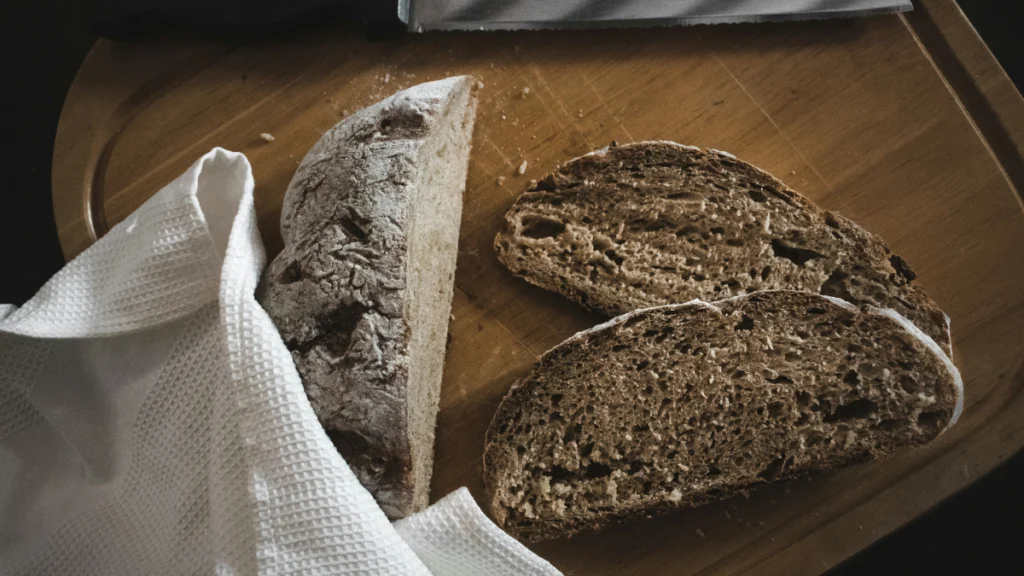
Equipment You’ll Need: Beyond Just the Bread Machine
To save time baking and achieve professional results with your pumpernickel bread machine recipe, you’ll need a few key pieces of equipment. While the bread machine is the centerpiece of your baking operation, other tools can enhance your experience and contribute to a superior loaf.
Choosing the Right Bread Machine
Not all bread machines are created equal, especially when it comes to making a dense and dark bread like pumpernickel. Look for a machine with a crust color control setting to achieve that characteristic dark color. Additionally, a machine with a delay timer can be very useful, allowing you to load ingredients at night and wake up to freshly baked bread in the morning. When selecting a bread machine, consider the size and whether it can handle the dough’s density.
Some bread machines come with a special setting for dense or dark breads, which can be a significant advantage when making pumpernickel. It’s also worth considering a machine with a built-in yeast container or automatic yeast dispenser, as this can simplify the mixing process and ensure that the yeast is added at the right time.
Additional Tools for Perfect Results
Beyond the bread machine, a few additional tools can make the baking process smoother and more efficient. A digital kitchen scale is invaluable for precise measurement of ingredients, which is crucial in bread making. A dough scraper or spatula can be helpful for removing dough from the machine’s pan and for scraping the sides of the pan during the mixing process.
For handling and storing your freshly baked pumpernickel, consider investing in a bread stone or bread keeper. These tools can help maintain the bread’s freshness and texture. Additionally, a serrated knife is essential for slicing your pumpernickel without compressing it, preserving its dense texture.
The Ultimate Pumpernickel Bread Machine Recipe in 5 Simple Steps
Discover the joy of baking pumpernickel bread at home with just a few easy steps using your bread machine. Making homemade pumpernickel bread is a straightforward process that requires attention to detail and the right guidance. Here’s how you can achieve delicious results with your bread machine.
Step 1: Precise Measuring of Ingredients
The first step to making great pumpernickel bread is accurately measuring your ingredients. Use a digital scale to measure out the flour, rye flour, water, salt, sugar, and yeast according to your recipe. Precision is key to ensuring your bread turns out right. Make sure you’re using the right type of flour and not substituting ingredients without understanding the potential effects on the final product.
Step 2: Adding Ingredients in the Correct Order
Most bread machines come with guidelines on the order in which you should add ingredients. Typically, you’ll start with the liquids (water, oil), followed by the dry ingredients (flour, sugar, salt), and finally the yeast. Adding ingredients in the right order helps in achieving the perfect loaf. Consult your bread machine’s manual for specific instructions.
Step 3: Selecting the Right Machine Settings
Choose the right setting on your bread machine for making a dense, dark bread like pumpernickel. Some machines have a specific setting for whole grain or dark bread. If your machine doesn’t have this, the basic setting will usually work. You may need to adjust the crust color setting to dark to achieve the characteristic pumpernickel crust.
Step 4: Monitoring the Baking Process
While your bread machine does most of the work, it’s a good idea to monitor the baking process. Listen for any unusual sounds, and check on the bread’s progress around the time it’s supposed to be done. Some machines allow you to check the bread’s status during the cycle, which can be helpful.
Step 5: Cooling and Storing Your Bread
Once your bread is done, remove it from the machine and let it cool on a wire rack. Cooling is crucial for the texture and flavor of your pumpernickel. After it has cooled, store it in an airtight container to keep it fresh. You can also slice it and freeze it for later use.
By following these simple steps, you can enjoy delicious, easy pumpernickel recipe made right in your own home. Happy baking!
Mastering the Art of Pumpernickel: Expert Tips and Tricks
Achieving the perfect loaf of pumpernickel bread is within your reach with these expert insights and practical tips. To elevate your bread-making skills, it’s essential to understand the intricacies of texture and flavor that define a great pumpernickel.
Achieving the Perfect Texture
The texture of pumpernickel bread is characterized by its dense and dark nature, with a slightly chewy crumb. To achieve this, ensure you’re using the right type of flour; a coarse, dark rye flour is ideal. Additionally, the ratio of water to flour plays a crucial role. A higher moisture content can lead to a denser loaf, but be cautious not to overdo it, as this can result in a bread that’s too soggy.
Another critical factor is the proofing time. Allowing the dough to proof for the right amount of time will help develop the gluten, leading to a better texture. Experiment with proofing times to find what works best for your specific environment and ingredients.
Enhancing the Distinctive Pumpernickel Flavor
Pumpernickel’s distinctive flavor is largely due to the use of dark rye flour and caraway seeds. To enhance this flavor, consider toasting the caraway seeds before adding them to your dough. This simple step can bring out a deeper, nuttier flavor that complements the earthy sweetness of the rye.
Furthermore, the type of liquid used can impact the flavor. Using coffee or molasses instead of water can add depth and complexity to your pumpernickel. These ingredients enhance the bread’s dark color and contribute to a richer, more nuanced taste.
By implementing these expert tips, you’ll be well on your way to creating a pumpernickel bread that’s not only delicious but also authentic in texture and flavor. Whether you’re a seasoned baker or just starting out, the key to success lies in understanding the interplay between ingredients and technique.
Troubleshooting Common Issues with Your Pumpernickel Bread
Even with a bread machine, baking pumpernickel bread can present a few hurdles. Issues such as texture problems, flavor inconsistencies, and machine-related faults can arise. Understanding how to troubleshoot these common problems can significantly enhance your bread-making experience.
Addressing Texture Problems
Texture issues in pumpernickel bread can range from being too dense to too crumbly. To achieve the perfect texture, ensure you’re using the right type of flour and that your ingredients are at room temperature. Overmixing can also lead to undesirable textures.
Tips for Better Texture: Use the correct flour type, keep ingredients at room temperature, and avoid overmixing.
Solving Flavor Challenges
The distinctive flavor of pumpernickel bread can be a challenge to get right. If your bread lacks the characteristic depth, consider adjusting the amount of molasses or rye flour. Ensuring that you’re using fresh ingredients can also make a significant difference.
Enhance Flavor: Adjust molasses and rye flour quantities, and use fresh ingredients.
Fixing Machine-Related Issues
Sometimes, the issue isn’t with the ingredients or the recipe but with the bread machine itself. Ensure that your machine is clean and that you’re using the correct settings for pumpernickel bread. Consulting the user manual or manufacturer’s website can provide specific troubleshooting tips.
| Issue | Possible Cause | Solution |
| Too dense | Overmixing, wrong flour type | Adjust mixing time, use appropriate flour |
| Lack of flavor | Insufficient molasses or rye | Adjust quantities of key ingredients |
| Machine not functioning | Incorrect settings, machine dirty | Check settings, clean the machine |
By understanding and addressing these common issues, you can improve your pumpernickel bread-making skills and enjoy a more satisfying baking experience. Whether you’re a novice or an experienced baker, troubleshooting is a valuable skill that can save time baking and enhance the quality of your homemade bread.
Delicious Variations of the Basic Pumpernickel Bread Machine Recipe
With your basic pumpernickel bread recipe under your belt, you can start exploring a world of delicious variations. The beauty of making homemade pumpernickel bread lies in its customizability, allowing you to experiment with a wide range of ingredients to create unique flavor profiles.
Adding Seeds and Grains
One way to enhance your pumpernickel bread machine recipe is by incorporating various seeds and grains. Consider adding:
- Sunflower seeds for a nutty flavor
- Flaxseeds for an extra nutritional boost
- Oats or barley for added texture
These additions not only change the flavor but also improve the nutritional value and texture of your bread.
Sweet and Savory Adaptations
You can also experiment with sweet and savory adaptations to give your pumpernickel a unique twist. Try:
- Adding dried fruits like cranberries or raisins for a sweet contrast
- Incorporating herbs and spices, such as rosemary or caraway seeds, for a savory flavor
These variations can help you create a bread that suits any meal or occasion.

Gluten-Free Pumpernickel Options
For those with gluten intolerance, you can still enjoy pumpernickel bread by using gluten-free flours. Substitute traditional flour with a gluten-free blend and adjust the liquid content as needed. Be aware that gluten-free bread may have a different texture and flavor.
By exploring these variations, you can keep your bread-making interesting and tailored to your preferences or dietary needs.
Serving Suggestions: Pairing Your Homemade Pumpernickel Bread
With your homemade pumpernickel bread ready, let’s dive into some exciting serving suggestions that will elevate your dining experience. Pumpernickel bread is incredibly versatile, making it perfect for a variety of dishes, from classic sandwiches to elegant appetizers.
Classic Sandwich Combinations
Pumpernickel bread’s dense texture and rich flavor make it an ideal base for hearty sandwiches. Try pairing it with smoked salmon, cream cheese, and thinly sliced red onion for a delicious and refreshing sandwich. Alternatively, layer roast beef, cheddar cheese, and horseradish sauce for a satisfying and savory option.
For a vegetarian delight, combine pumpernickel bread with avocado, sprouts, and a tangy slaw made from red cabbage and carrots. These combinations not only taste great but also provide a visually appealing meal.
Pumpernickel as an Appetizer Base
Pumpernickel bread can be transformed into an elegant appetizer with a few simple toppings. Top toasted pumpernickel slices with caramelized onions, crumbled blue cheese, and a sprinkle of fresh thyme for a flavorful and sophisticated start to any meal.
Another option is to use pumpernickel as a base for canapés, topped with a dollop of sour cream, a sprinkle of chives, and a piece of smoked salmon. These bite-sized treats are perfect for entertaining and can be customized to suit any taste.
Conclusion: Enjoying the Rewards of Your Homemade Pumpernickel Bread
Baking your own pumpernickel bread using a simple bread recipe is a rewarding experience that opens the door to a world of delicious possibilities. You’ve now mastered the art of making this dense, dark bread with a distinctive flavor, all thanks to your bread machine.
As you slice into your freshly baked loaf, the aroma of caraway seeds and rye fills the air, transporting you to traditional European bakeries. You can now bake pumpernickel bread to perfection, experimenting with various add-ins and flavor combinations to create your signature bread.
The simple bread recipe provided is just the starting point. Feel free to explore different ingredients and techniques to innovate your own pumpernickel variations. Whether you’re making sandwiches, croutons, or simply enjoying a slice with your favorite spread, your homemade pumpernickel is sure to impress.
FAQ
Can I use a bread machine to make pumpernickel bread?
Yes, you can easily make pumpernickel bread using a bread machine. Simply follow the recipe and guidelines provided, and your machine will do the rest.
What type of flour is best for making pumpernickel bread?
For authentic pumpernickel flavor, use coarse, dark rye flour. You can also mix it with some all-purpose flour for a lighter texture.
How do I achieve the characteristic dark color of pumpernickel bread?
The dark color comes from using dark rye flour and sometimes molasses or coffee. You can also brush the loaf with a mixture of water and molasses before baking for an even darker crust.
Can I add other ingredients to customize my pumpernickel bread?
Absolutely! You can add seeds, nuts, or different spices to create unique variations. Just be mindful of the quantities to avoid affecting the dough’s balance.
How do I store homemade pumpernickel bread to keep it fresh?
Store your pumpernickel bread in an airtight container at room temperature for up to 3 days. For longer storage, wrap it tightly and freeze.
Why did my pumpernickel bread turn out dense or heavy?
Density can result from overmixing the dough, using too much flour, or not enough yeast. Ensure you’re measuring ingredients accurately and follow the recipe’s instructions.
Can I make gluten-free pumpernickel bread in a bread machine?
Yes, you can make gluten-free pumpernickel bread using a gluten-free flour blend. However, you may need to adjust the liquid content and other ingredients according to the specific gluten-free flours you’re using.
How can I enhance the flavor of my pumpernickel bread?
To enhance the flavor, try adding caraway seeds, coriander, or a bit of cocoa powder. You can also use different types of rye flour or adjust the amount of molasses or coffee.
